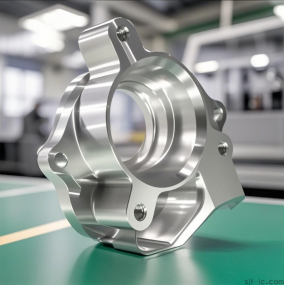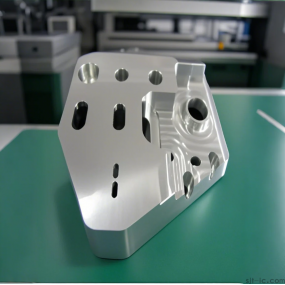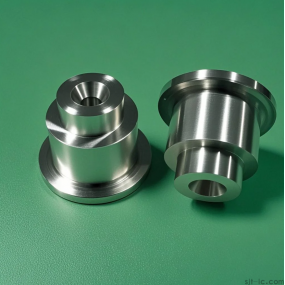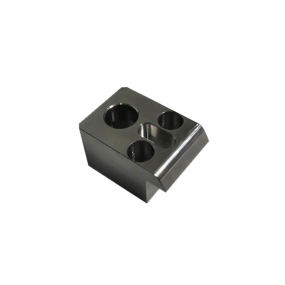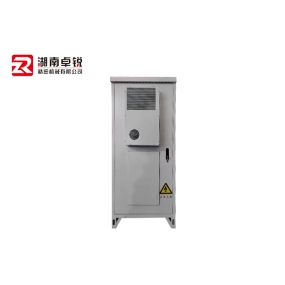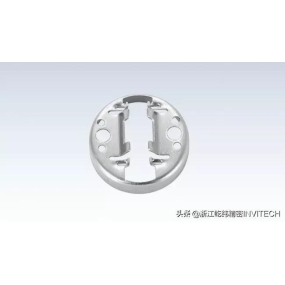Oh, do friends who are new to this industry feel overwhelmed as soon as they hear "CNC Machining wholesale"? 😫 What exactly is small-batch production? And how to find a reliable factory? Don't worry! Today, I'll break down these questions in plain language, especially for those with small-batch hardware parts production needs, to help newbies avoid pitfalls~

What is small-batch production? Who is it suitable for?
Small-batch production generally refers to orders ranging from dozens to hundreds of pieces. It is suitable for trial production, sample verification, or niche products! For example, a startup team making smart hardware casings might first order 50 pieces for testing — the cost is low, flexibility is high, and even if things go wrong, it won't be a big loss 😎. But large-batch production? It often involves thousands of pieces at a time, which ties up a lot of capital and is really daunting!
In my opinion, the core of small-batch production is "trial and error"! It's much more stable to first run through the process on a small scale and then scale up later.
What are the advantages of small-batch production?
- Cost control: Achieve more with less money, ideal for teams with tight budgets.
- Rapid iteration: If design issues are found, they can be revised immediately without wasting materials regretfully.
- Low inventory pressure: No need to stock up a large amount of goods, keeping cash flow healthier.
- High customization flexibility: You can freely adjust the color, material, and process — who would bother with that for large-batch orders?
However, it's important to note that the unit cost of small-batch production is definitely higher. After all, the factory's setup cost is spread across each piece! But it's still better than suffering heavy losses from overstocking in large-batch production, right? 💪
How to choose a reliable wholesale factory?
Finding a CNC factory is like finding a partner — being cheap alone isn't enough! You need to check the following aspects:
1. Equipment list: Does the factory have 5-axis machines or precision engraving machines? Old equipment will lead to poor precision!
2. Material inventory: Does it keep common materials like aluminum, stainless steel, and copper in stock? Procuring materials on the spot will delay the schedule!
3. Real case photos: Ask for photos of finished small-batch products from past customers. Be cautious if the pictures are blurry!
4. Quotation transparency: Don't just look at the total price! The quotation should break down material costs, processing fees, and post-processing fees — pitfalls are often hidden in the details 😤.
5. Communication response: If the factory responds slowly, it's likely that their after-sales service will also be poor...
I often check the WeChat Moments of factories: Those that post workshop videos every day are usually reliable. After all, only factories that are actually busy with production have content to share!
Tips for quality control in small-batch production
Even if you're only producing 100 pieces, quality control can't go wrong! Remember these points:
- First-piece inspection is a must: Carefully measure the dimensions of the first sample and confirm it before starting mass production!
- Mid-production sampling inspection: Randomly select a few pieces halfway through production to avoid large-scale deviations.
- Test panels for surface treatment: First make small samples for processes like sandblasting and oxidation. Stop immediately if the color is incorrect!
Let me answer a common question: Why do some people always encounter problems in small-batch production? — Many people skip trial production and go straight to mass production without even adjusting the tool path parameters properly!
Common application fields
Small-batch CNC parts are almost versatile! 👇
- Smart hardware: Headphone casings, sensor brackets.
- Robotics: Joint connectors, custom gears.
- Medical equipment: Biopsy forceps, instrument casings (sterility certification required).
- Scientific research instruments: Non-standard brackets, optical platform parts.
One of the most impressive orders I've handled was making titanium alloy fixtures for the Palace Museum's cultural relic restoration tools! Only 30 sets were produced, but the requirement was millimeter-level precision — it almost drove the factory crazy 👴💦.
Personal insights
Having been in this industry for ten years, I think the core of small-batch production is "balance": a trade-off between quality, cost, and construction period! Don't choose a shoddy factory just to save money, nor blindly pursue overpriced "top-tier" factories. Talk to multiple factories, compare their physical samples — that's the right way to go!
Recently, I've noticed that young teams like to use the combination of 3D printing + small-batch CNC: They use 3D printing to verify the shape, and then use CNC for small-batch production of metal parts. It's cost-effective and efficient! You can give it a try ✨.
Would you like me to sort out a glossary of key terms for small-batch CNC hardware processing? It will include Chinese terms, their corresponding English translations, and simple explanations, which can help you communicate more accurately with overseas factories or teams.


 Spanish
Spanish Arabic
Arabic French
French Portuguese
Portuguese Belarusian
Belarusian Japanese
Japanese Russian
Russian Malay
Malay Icelandic
Icelandic Bulgarian
Bulgarian Azerbaijani
Azerbaijani Estonian
Estonian Irish
Irish Polish
Polish Persian
Persian Boolean
Boolean Danish
Danish German
German Filipino
Filipino Finnish
Finnish Korean
Korean Dutch
Dutch Galician
Galician Catalan
Catalan Czech
Czech Croatian
Croatian Latin
Latin Latvian
Latvian Romanian
Romanian Maltese
Maltese Macedonian
Macedonian Norwegian
Norwegian Swedish
Swedish Serbian
Serbian Slovak
Slovak Slovenian
Slovenian Swahili
Swahili Thai
Thai Turkish
Turkish Welsh
Welsh Urdu
Urdu Ukrainian
Ukrainian Greek
Greek Hungarian
Hungarian Italian
Italian Yiddish
Yiddish Indonesian
Indonesian Vietnamese
Vietnamese Haitian Creole
Haitian Creole Spanish Basque
Spanish Basque

